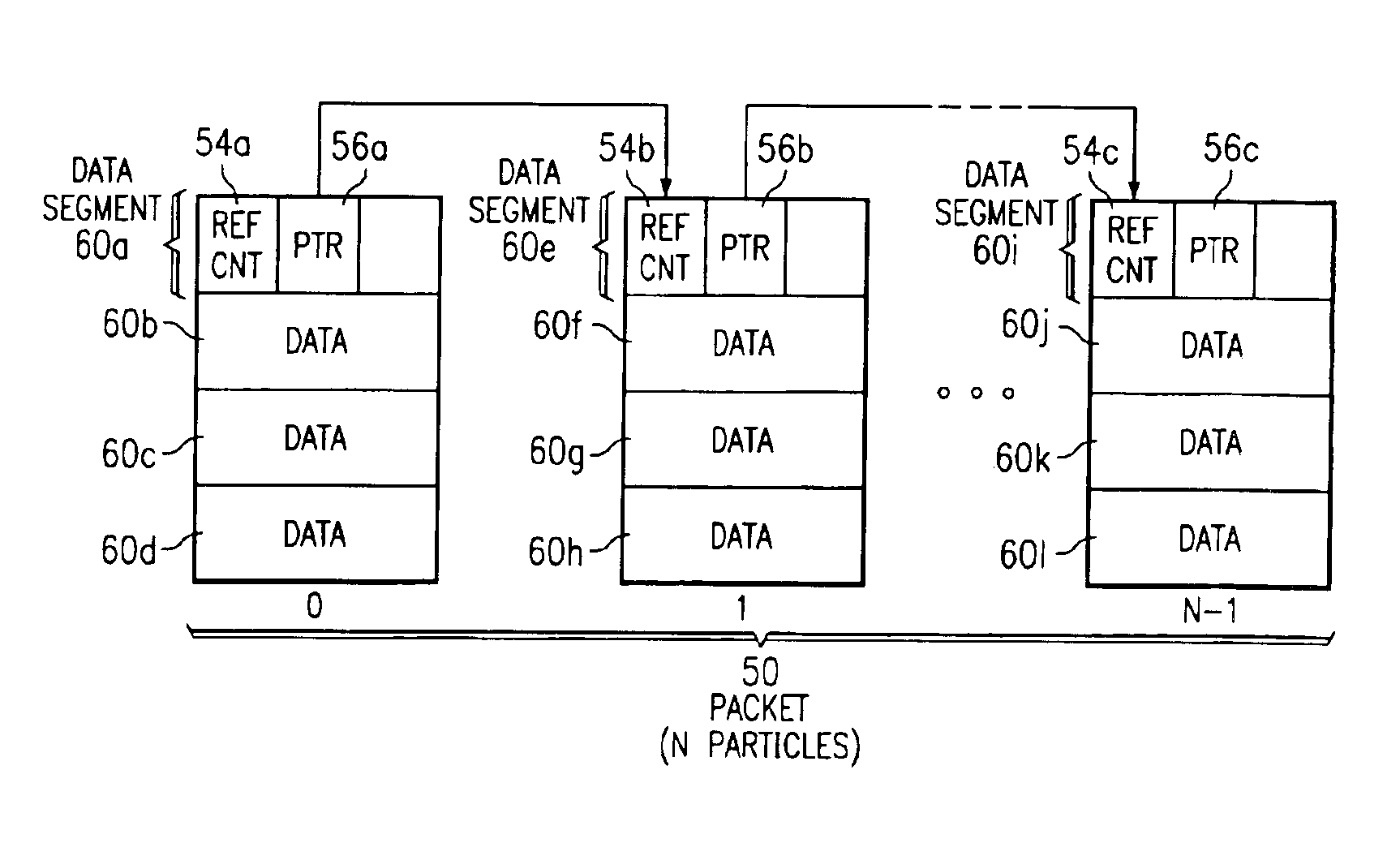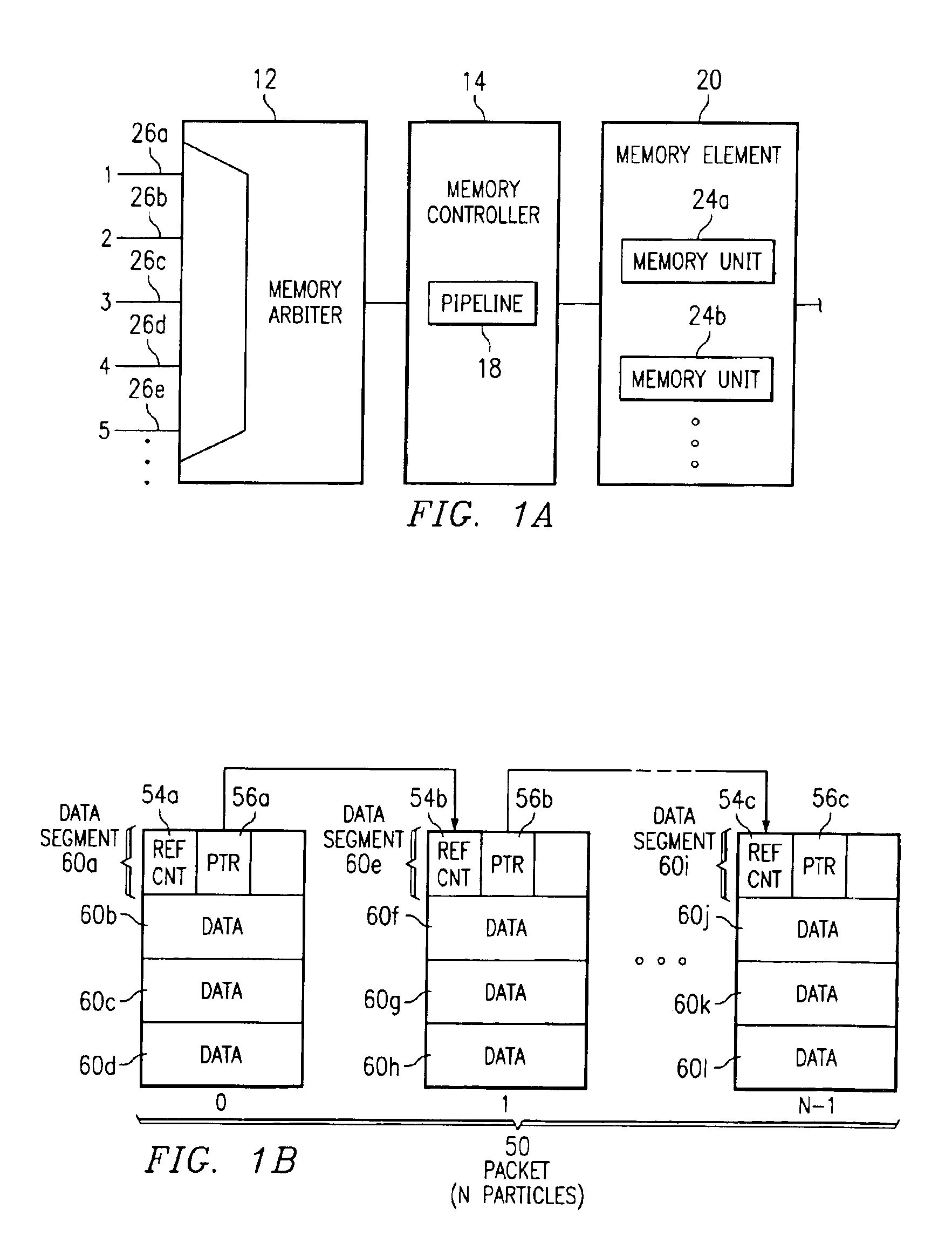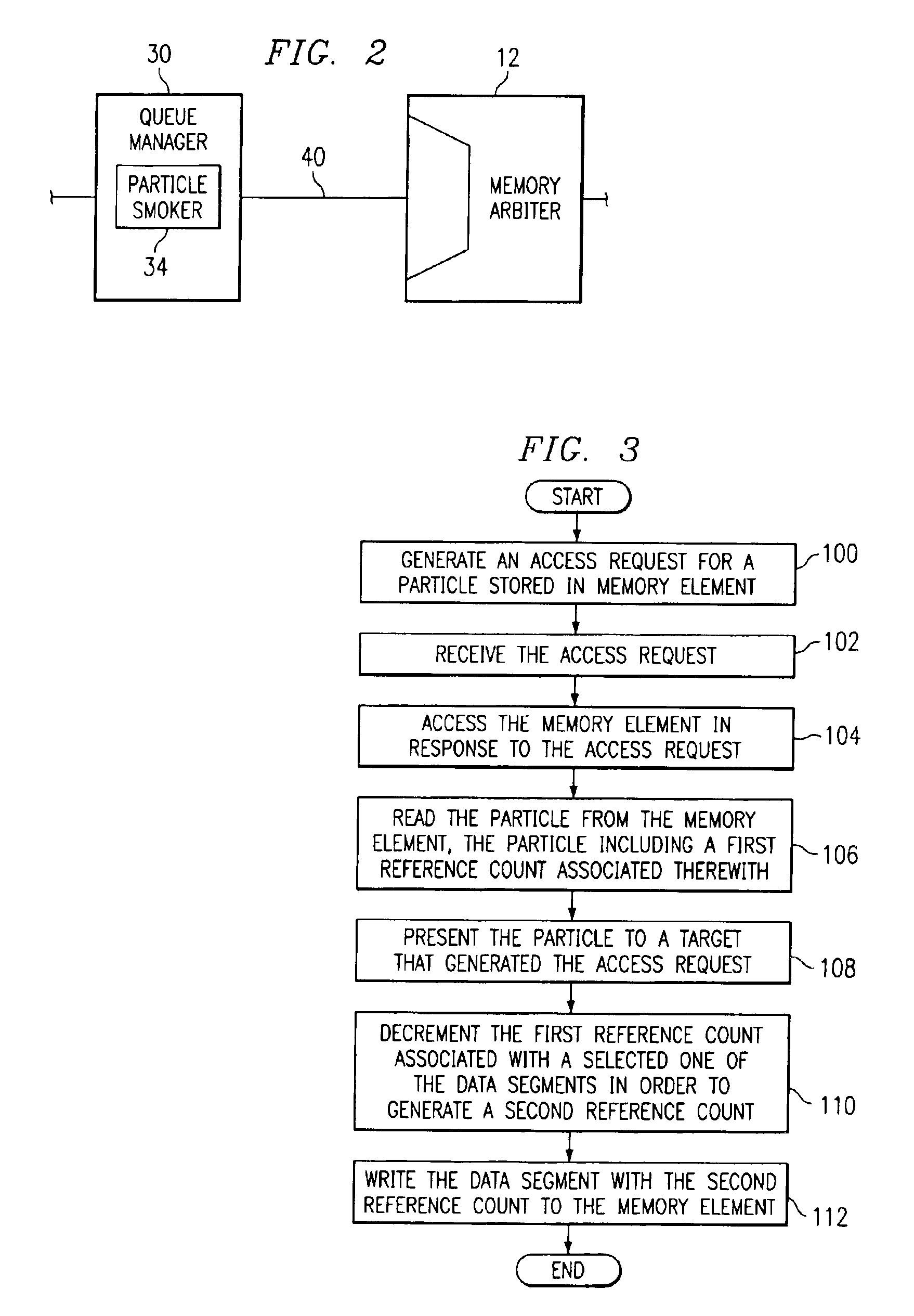System and method for decrementing a reference count in a multicast environment
- Summary
- Abstract
- Description
- Claims
- Application Information
AI Technical Summary
Benefits of technology
Problems solved by technology
Method used
Image
Examples
Embodiment Construction
[0014]FIG. 1A is a simplified block diagram of a system 10 for decrementing a reference count in a multicast environment. System 10 includes a memory arbiter 12, a memory controller 14 that includes a pipeline 18, and an memory element 20 that includes multiple memory units 24a and 24b. System 10 also includes a number of inputs 26a-26e that represent a series of links to multiple targets which seek to access data or information from memory element 20. System 10 may be included in any suitable component or hardware, such as within an integrated circuit (or an application specific integrated circuit (ASIC)), an electrically erasable programmable read only memory (EEPROM), or a field programmable gate array (FPGA) for example.
[0015]According to the teachings of the present invention, memory controller 14 operates to automatically decrement a reference count value associated with a particle that may include multiple data segments stored in memory element 20. After the particle is read ...
PUM
 Login to View More
Login to View More Abstract
Description
Claims
Application Information
 Login to View More
Login to View More - R&D
- Intellectual Property
- Life Sciences
- Materials
- Tech Scout
- Unparalleled Data Quality
- Higher Quality Content
- 60% Fewer Hallucinations
Browse by: Latest US Patents, China's latest patents, Technical Efficacy Thesaurus, Application Domain, Technology Topic, Popular Technical Reports.
© 2025 PatSnap. All rights reserved.Legal|Privacy policy|Modern Slavery Act Transparency Statement|Sitemap|About US| Contact US: help@patsnap.com



